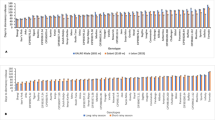Summary
Autumn grown potatoes harvested in December cannot be used for planting in February–March, as they are still dormant at that time. The lengthy dormant period ofUp-to-Date, the main variety cultivated in Israel, was found to be the bottleneck of the problem of supply of locally grown seed tubers.
In order to find varieties with a shorter dormant period, 52 varieties from different sources were introduced. The seed material was propagated twice before it was used for the first screening test in spring 1956.
The first test has shown that varieties with a short dormant period gave the best results and those with a long one the worst.
The second screening in spring 1957, in which a limited number of the most promising varieties were tested, has shown that length of growing period is at least as important as length of dormant period, and that early and medium-early varieties are best.
In spite of the results obtained we consider that it will be necessary to breed new varieties more adapted to the specific requirements of growing two crops a year.
Zusammenfassung
Im Herbst ausgepflanzte und im Dezember geerntete Kartoffeln können nicht zum Auspflanzen im Februar verwendet werden, da sie sich dann noch in der Keimruhe befinden.
Die ziemlich lange Keimruhe vonUp-to-Date, der in Israel am meisten angebauten Sorte, erwies sich als die grösste Schwierigkeit bei der Lösung des Problems der Versorgung mit einheimischem Saatgut.
Um Sorten mit kürzerer Keimruhe zu finden, wurden 52 Sorten verschiedener Herkunft eingeführt. Das Saatgut wurde zweimal fortgezüchtet, bevor es für den ersten Auslesetest im Frühjahr 1956 verwendet wurde.
Der erste Versuch zeigte, dass Sorten mit kurzer Keimruhe die besten und Sorten mit langer Keimruhe die schlechtesten Resultate ergaben. Die zweite Auslese im Frühjahr 1957, wobei eine kleinere Anzahl der aussichtsreichsten Sorten geprüft wurde, zeigte, dass die Dauer der Wachstumsperiode mindestens ebenso wichtig ist wie die Länge der Keimruhe und dass frühe und mittelfrühe Sorten die besten sind.
Ungeachtet dieser Ergebnisse halten wir es für angezeigt, neue Sorten zu züchten, die den besonderen Ansprüchen einer zweimaligen Ernte im Jahr besser genügen.
Résumé
Les pommes de terre d'automne récoltées en décembre ne peuvent servir de semence en févriermars, puisqu'elles se trouvent encore à l'état latent à cette époque.
La période de latence assez prolongée de l'Up-to-date, la principale variété cultivée en Israel, constitue le majeur obstacle à l'approvisionnement en semences locales.
Afin de trouver des variétés à courte période de latence, nous avons introduit 52 variétés de différentes provenances. Celles-ci ont dû être multipliées deux fois avant que nous ayons pu entreprendre le premier essai au printemps 1956. Ce premier essai a permis de constater que les variétés à courte période de latence étaient les meilleures, celles à période de latence prolongée donnant les résultats les moins bons.
La seconde sélection fut effectuée au printemps 1957. A cette occasion, un plus petit nombre de variétés particulièrement prometteuses furent étudiées. Il fut constaté que la durée de végétation a une importance au moins égale à celle de la durée de latence. Les variétés précoces et moyennes étaient les meilleures.
Malgré les résultats de cette étude, nous en sommes arrivés à cette conclusion qu'il nous faudra sélectionner, des variétés nouvelles, mieux adaptées aux exigences particulières de la culture de la pomme de terre effectuée à deux reprises dans la même année.
Similar content being viewed by others
References
Climatological Normals (1952): Meteor. Serv. Min. of Trans. and Communications, State of Israel. Notes No. 3.
Denny, F. E. (1926): Hastening the sprouting of dormant potato tubers.Amer. J. Bot. 13, 118–125.
Kawakami, K. (1953). Physiological aspects of potato seed tuber. Mem. of the Hyogo Univ. of Agr.2, 1.
Littauer, F. (1942): Breaking dormancy in autumn potatoes for spring sowing by means of Ethylene-Chlorhydrine vapour. Bull. Agr. Exp. Sta. Rehovot, Israel (Hebrew).
Rosenthal, Z. (1947): Problems of seed potato growing in Israel. Bull. “Hazera” Seed Co. (Hebrew).
Author information
Authors and Affiliations
Additional information
Publication of the National and University Institute of Agriculture, Rehovot, 1960. Series No. 354-E.
Rights and permissions
About this article
Cite this article
Slomnicki, I. Screening potato varieties for short dormancy. Europ. Potato J. 4, 201–210 (1961). https://doi.org/10.1007/BF02366066
Received:
Published:
Issue Date:
DOI: https://doi.org/10.1007/BF02366066




